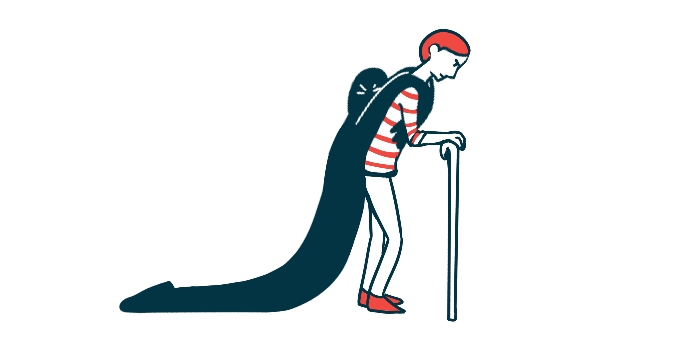Insomnia, depression contribute to chronic fatigue in hEDS: Study
Most patients experience fatigue that affects daily functioning, mental health
Written by |

Insomnia and depression strongly contribute to the chronic fatigue that affects about 80% of adults with hypermobile Ehlers-Danlos syndrome (hEDS), interfering with their daily functioning and mental health, a study in Italy shows.
The study compared fatigue between people with hEDS and those with another condition that also affects the connective tissue, called Marfan syndrome. Findings show depression and insomnia (when it is hard to fall asleep or stay asleep) are tied to fatigue in hEDS.
This study reveals “the severe impact of fatigue on individuals with hEDS compared with those with [Marfan syndrome], suggesting the need for targeted, multidisciplinary management strategies to enhance quality of life,” researchers wrote. “For example, hEDS patients may benefit more from interventions focused on managing insomnia and chronic pain.”
The study, “Exploring fatigue in Marfan and hypermobile Ehlers-Danlos syndromes: an analytical cross-sectional study in two Italian healthcare centres,” was published in BMJ Open.
Both hEDS and Marfan syndrome are connective tissue disorders with bodywide symptoms, including fatigue, that may limit quality of life. In these syndromes, fatigue may be influenced by several factors, including cardiovascular or respiratory conditions, and psychological issues like depression and anxiety.
Fatigue often managed similarly in different disorders
Despite distinct underlying causes, fatigue is commonly managed similarly in different disorders. To know more about fatigue in hEDS and Marfan syndrome, researchers in Italy conducted a study, called FAMED (NCT05712564), across two specialized centers in the country. FAMED stands for Fatigue, Depressive Disorders and Insomnia in Adult Patients with Marfan Syndrome and Ehlers-Danlos Syndrome: Survey.
A total of 282 participants, 127 with Marfan syndrome and 155 with hEDS, with a mean age of 39 years, were included in the study. Most participants were women (71.3%), although the proportion of women was higher in the hEDS group than in the Marfan group (87.1% vs. 52%).
The majority (70.2%) had cardiovascular diseases, particularly those with Marfan syndrome (80.3% vs. 61.9% in the hEDS group), while high blood pressure was more prevalent in hEDS patients (13.5% vs. 8.7%). More people with hEDS had joint diseases (36.4% vs. 7.7%).
Marfan syndrome patients more often used medications to treat cardiovascular diseases (76.4% vs. 23.2%), while those with hEDS more frequently took medications for depression (18.7% vs. 6.3%) or insomnia (32.3% vs. 7.9%), and were receiving psychotherapy (32.9% vs. 11%), also known as talk therapy.
Fatigue was measured using the Fatigue Severity Scale, a tool to evaluate the impact of self-reported fatigue on daily functioning, with a higher score representing greater fatigue.
“This scale is particularly useful in distinguishing fatigue from clinical depression, as it focuses more on the physical aspects of fatigue rather than mood-related symptoms,” the scientists wrote.
Higher fatigue scores from hEDS patients
Patients with hEDS reported higher median fatigue scores (5.9 vs. 4) than those with Marfan syndrome, and had a higher prevalence of clinically relevant fatigue (80% vs. 31.5%), which refers to persistent tiredness or exhaustion that impacts daily life.
In addition, 72.2% of participants with hEDS experienced fatigue every day, compared with 25.2% of those with Marfan syndrome. In particular, those with hEDS had an even distribution of fatigue throughout the day, which aligned with the results for insomnia, the researchers noted.
Overall, being female, having hEDS, participating in psychotherapy, and having more severe depression and insomnia was significantly associated with fatigue.
“The described findings show that fatigue is a more prevalent and severe symptom in the hEDS population compared with [Marfan syndrome], highlighting the need for syndrome-specific approaches in clinical management,” the researchers wrote. “In hEDS, insomnia and depression were particularly strong contributors to fatigue, suggesting the need for interventions targeting sleep quality and mental health.”




